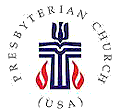“Do you solemnly swear or affirm that you will tell the truth, the whole truth, and nothing but the truth, so help you God?” This question, or one like it, marks the beginning of virtually every courtroom scene as a witness takes the stand. The answer implies a commitment to truth beyond just casual conversation. It is meant to spark the conscience, bringing an intentionality and gravity to the circumstances of the testimony. The stories shared by witnesses matter, and they are among the most powerful of all testimony, with each sharing their truth.
The story of Easter is one of witnesses. As Luke tells it, Mary Magdalene, Joanna, Mary the mother of James, and other women are amazed at the sight of the empty tomb and the news that Jesus is risen from the dead. It was unimaginable, and likely unbelievable to their eyes. As they try to wrap their heads around such a concept, they are helped by a jogged memory; Jesus had hinted at this before. They connect the dots, and the story, the whole story of Jesus of Nazareth, comes together. And together they bear witness to the most amazing revelation of all time.
But what happens when they share the news? The disciples brush it off. The word in the Greek is leros. It is translated by the NRSV as “idle tale,” with the dictionary offering “nonsense” or “empty talk” as additional options. The root is connected to our word for “delirious,” and Greek it is usually reserved to describe the ranting of a person suffering from delirium. This is not a word to be taken lightly. Karoline Lewis even suggests it may have been intended akin to how we would utter an expletive when someone tells us something that is so inconceivable that we’re sure that they are just making it up. It is a word used in the New Testament exactly one time – here in Luke 24. The eleven disciples, despite all that Jesus had said, and despite the compelling testimony from these women, did. not. believe. them.
Skepticism about such highly unlikely news as a man coming back from the dead is certainly a reasonable doubt. Eyewitness testimony is tricky. Studies show that it is heavily relied upon, but is highly unreliable[i]. It seems the more we learn about science and how the brain works, the less we can take into account how someone remembers any given event as factual truth. From the disciples to modern ears, our first response to news this radical also may be to write it off as nonsense. But, seeing as you’re here this morning, there must be something that draws you in a bit more. Maybe you too are poking your head into the empty tomb, you know, just in case there might be something to this report.
The power of the testimony of the women at the tomb was more than just an absence of a body. They were testifying to the fullness of the story of God’s incarnation and promise. They had remembered (verse 8) all that Jesus had taught them about who God was, is, and will be. Just as the tomb was broken open, so was the silence they had kept since standing at the foot of the cross. The story of a Savior could no longer be kept quiet. It had to be told, proclaimed, preached. This is the gospel. Good news that is worth repeating.
Our text from Acts is a continuation of their witness, with the author of the gospel of Luke describing how belief in Jesus Christ as Savior spread. Peter’s sermon, given here after his lifechanging, eye-opening dream and exchange with Cornelius, is his Easter testimony. In it, he recounts not just the empty tomb, but a complete and concise summary of Christ’s life and teachings. As Nancy Clare Pittman offers:
The boundless gift of the empty tomb cannot be separated from the words and actions of Jesus. Resurrection, after all, is not some buoyant ideal, unconnected to the real world. It is an invitation to live as Jesus lived, a doorway to a life in which meals are shared with enemies, healing is offered to the hopeless, prophetic challenges are issued to the powerful. Only now it is not Jesus who does these things – it is we ourselves who see at last the subversive power of the resurrection in order to live it now[ii].
The witnesses of Easter are not just recounting facts to us almost two thousand years later in these passages; they are inviting us to take our place in the story, in God’s story, so that perhaps we, too, might become witnesses to the resurrection. You may think about witnesses as just being in the courtroom but the truth is, we encounter testimony and witnesses almost every day. Have you ever looked up reviews for a product you are thinking about buying, or asked friends where the best place to go for brunch is? You are looking for witnesses. Have you shared a recipe, talked about a show you just discovered on Netflix, or passed along the name of a plumber or electrician? You have given testimony.
So, what would you say if asked about your faith, or what you believe about God or Jesus? Would you have a story spilling out of you like Mary Magdalene and Peter? Or, would you be more like a child who climbs in the car after school and answers the question “so, what did you learn/do at school today?” with a shrug and a “don’t know.” Articulating our own faith and experience of the risen Christ can feel overwhelming. And that’s normal. Amazement was the reaction of the women at the tomb at first, too. But the call of Easter is to move from our amazement into becoming witnesses. All of our “alleluias” should lead us into proclamation that Christ is indeed alive. The Resurrection isn’t just reporting on an event from the past; it’s a celebration of an active and present God in the world even today.
All around us are signs of resurrection and new life. The soggy ground has been nourished and softened, with fresh sprigs of green pushing through the soil. This week the world gasped and grieved at the sight of a fire in the cathedral in Notre Dame, France. As stories circulated about the immediate efforts to restore this iconic site, a movement began to raise awareness about some lesser-known houses of worship in Louisiana. About a month ago, fires consumed St. Mary Baptist Church, Greater Union Baptist Church, and Mount Pleasant Baptist Church within 10 days in St. Landry Parish, fires set in hatred by an arsonist to these African-American churches. As of last Sunday, a GoFundMe fundraiser had raised just below $50,000. After some politicians, activists, celebrities and journalists heard of the story in the wake of Notre Dame, the idea of helping out a bit closer to home caught on. By Wednesday morning, the total raised topped $1 million[iii].
A tragic story that could have been a blip on the radar, is now a story of hope as these communities rise up from the ashes. What made the difference? People willing to serve as witnesses and share the story.
Today, we gather to hear news once again of the empty tomb, and to remind ourselves of the greatness of this story. As those who have experienced the risen Christ, even here, even now, we too are witnesses to the transforming power of God. The question Easter asks of us is are we ready to take the stand and give testimony to that good news. May we find the words that speak truth to our experience of God in the world, and may our promise be sealed and affirmed in the words with which we greet each other this day. Christ is risen! Christ is risen indeed. Amen.
~Sermon by Rev. Elizabeth Lovell Milford, Heritage Presbyterian Church, April 21, 2019 (Easter Sunday)
______________________________________________________________________________________________________________
[i] For additional insights, see articles such as https://www.simplypsychology.org/eyewitness-testimony.html, https://theconversation.com/new-research-reveals-how-little-we-can-trust-eyewitnesses-67663, or https://www.scientificamerican.com/article/do-the-eyes-have-it/. Accessed 4/16/20.
[ii] Nancy Claire Pittman, “Homiletical Perspective: Luke 24:1-12,” Feasting on the Word: Year C, Volume 2, David L. Bartlett and Barbara Brown Taylor, editors (Louisville, KY: Westminster John Knox Press, 2009).
[iii] https://www.washingtonpost.com/nation/2019/04/17/after-notre-dame-fire-gofundme-ensured-black-churches-burned-louisiana-got-million-too/?noredirect=on&utm_term=.929af710b4f3

